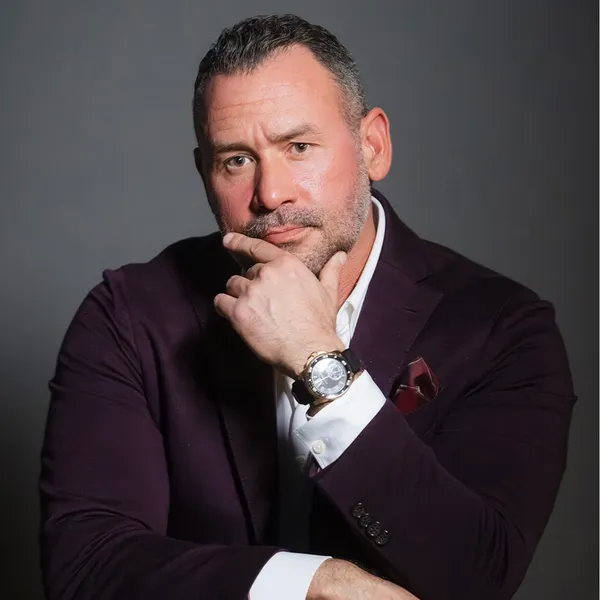Business
Flower Business Tips to Make your Business Successful

Running a flower business is hard. More than that, starting a business takes a lot of work to get it going. With the digital wave, more and more companies are going online. And there are plenty of floral shops online.
The reason for the rise of online floral shops and the best florist in Hong Kong is because flowers can be gifted on any occasion. Flowers can never go wrong. One can gift flowers on a birthday, on an anniversary, or even at any formal event. Its multipurpose quality is what sets it apart and makes it a huge favorite among people. Here are a few tips to make your online floral business successful.
Select a pretty logo, and a good logo will stand out and create a brand image. Like everyone is aware of the logo of ferns and petals that way, they can recognize you with your logo.
Create an attractive website, a good and intuitive website will make customers happy. They can easily find what they want. Website design also plays a considerable role in retaining visitors to tour website. If your website isn’t fast enough, the viewers will leave the site and may order from somewhere else.
There is also the issue or delivery. Make sure you provide delivery in plenty of locations. And if that isn’t possible for your businesses, you can display that on your website. Dissatisfied customers make for bad reviews. That’s why one needs to keep in mind to view precise details and live up to the claims.
There is a lot of competition in the industry because many people are preferring to order flowers online rather than doing it from the shop itself.
Business
Derik Fay and the Quiet Rise of a Fintech Dynasty: How a Relentless Visionary is Redefining the Future of Payments

Long before the headlines, before the Forbes features, and well before he became a respected fixture in boardrooms across the country, Derik Fay was a kid from Westerly, Rhode Island with little more than grit and audacity. Now, with a strategic footprint spanning more than 40 companies—including holdings in media, construction, real estate, pharma, fitness, and fintech—Fay’s influence is as diversified as it is deliberate. And his most recent move may be his boldest yet: the acquisition and co-ownership of Tycoon Payments, a fintech venture poised to disrupt an industry built on middlemen and outdated rules.
Where many entrepreneurs chase headlines, Fay chases legacy.
Rebuilding the Foundation of Fintech
In the saturated space of payment processors, Fay didn’t just want another transactional brand. He saw a broken system—one that labeled too many businesses as “high-risk,” denied them access, and overcharged them into silence. Tycoon Payments, under his stewardship, is rewriting that narrative from the ground up.
Instead of the all-too-common “fake processor” model, where companies act as brokers rather than actual underwriters, Tycoon Payments is being engineered to own the rails—integrating direct banking partnerships, custom risk modeling, and flexible support for underserved industries.
“Disruption isn’t about being loud,” Fay said in a private strategy session with advisors. “It’s about fixing what’s been ignored for too long. I don’t chase waves—I build the coastline.”
Quiet Power, Strategic Depth
Now 46 years old, Fay has evolved from scrappy gym owner to an empire builder, founding 3F Management as a private equity and venture vehicle to scale fast-growth businesses with staying power. His portfolio includes names like Bare Knuckle Fighting Championships, BIGG Pharma, Results Roofing, FayMs Films, and SalonPlex—but also dozens of companies that never make headlines. That’s by design.
Where others seek followers, Fay builds founders. Where most celebrate their exits, Fay reinvests in people.
While he often deflects conversations around his personal wealth, analysts estimate his net worth to exceed $100 million, with some placing it comfortably over $250 million, based on exits, real estate holdings, and the trajectory of his current ventures.
Yet unlike others in his tax bracket, Fay still answers cold DMs. He mentors rising entrepreneurs without cameras rolling. And he shows up—not just with capital, but with conviction.
A Mogul Grounded in Real Life
Outside of business, Fay remains committed to his role as a father and partner. He shares two daughters, Sophia Elena Fay and Isabella Roslyn Fay, and has been in a relationship with Shandra Phillips since 2021. He’s known for keeping his personal life private, but those close to him speak of a man who brings the same intention to parenting as he does to scaling multimillion-dollar ventures—focused, present, and consistent.
His physical stature—standing at 6′1″—matches his professional gravitas, but what’s more striking is his ability to operate with both discipline and empathy. Fay’s reputation among founders and CEOs is not just one of capital deployment, but emotional intelligence. As one partner noted, “He’s the kind of guy who will break down your pitch—and rebuild your belief in yourself in the same breath.”
The Tycoon Blueprint
The playbook Fay is writing at Tycoon Payments doesn’t just threaten incumbents—it reinvents the infrastructure. This isn’t another “fintech startup” with a flashy brand and no backend. It’s a strategically positioned venture with real underwriting power, cross-border ambitions, and a founder who understands how to scale quietly until the entire industry has to take notice.
In an age where so many entrepreneurs rely on noise and virality to build influence, Fay remains a master of what can only be called elite stealth. He doesn’t need the spotlight. But his impact casts a long shadow.
Conclusion: The Empire Expands
From Rhode Island beginnings to venture boardrooms, from gym owner to fintech force, Derik Fay continues to build not just businesses—but a blueprint. One rooted in resilience, innovation, and long-term infrastructure.
Tycoon Payments may be the latest chess piece. But the game he’s playing is bigger than one move. It’s a long game of strategic leverage, intentional legacy, and generational wealth.
And Fay is not just playing it. He’s redefining the rules.
-

 Tech5 years ago
Tech5 years agoEffuel Reviews (2021) – Effuel ECO OBD2 Saves Fuel, and Reduce Gas Cost? Effuel Customer Reviews
-

 Tech6 years ago
Tech6 years agoBosch Power Tools India Launches ‘Cordless Matlab Bosch’ Campaign to Demonstrate the Power of Cordless
-

 Lifestyle6 years ago
Lifestyle6 years agoCatholic Cases App brings Church’s Moral Teachings to Androids and iPhones
-

 Lifestyle5 years ago
Lifestyle5 years agoEast Side Hype x Billionaire Boys Club. Hottest New Streetwear Releases in Utah.
-

 Tech7 years ago
Tech7 years agoCloud Buyers & Investors to Profit in the Future
-

 Lifestyle5 years ago
Lifestyle5 years agoThe Midas of Cosmetic Dermatology: Dr. Simon Ourian
-

 Health6 years ago
Health6 years agoCBDistillery Review: Is it a scam?
-

 Entertainment6 years ago
Entertainment6 years agoAvengers Endgame now Available on 123Movies for Download & Streaming for Free
